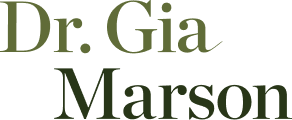Here’s why kids and teens deserve better.
“Stop trying to fix your body. It was never broken.”
— Eve Ensler
Nearly every pediatrician I have had the honor of collaborating with is genuinely passionate about supporting whole health in children, teens and families. This group of professionals is near and dear to my heart.
Pediatricians have a meaningful, yet difficult job.
Due to increasing time constraints and administrative duties in many healthcare settings, there is less time for doctors to spend with patients. They have more forms to complete, complex electronic record-keeping to navigate, and demands for communicating with patients and families outside of appointment times via email or portal messaging. This can be very challenging to say the least!
Now, as a result of new guidelines, physicians have new burdens to handle. Keeping kids’ and adolescents’ best interests at heart — and charting the right path forward just got harder.
The American Academy of Pediatrics released its first guidelines for the evaluation and treatment of weight in children and adolescents.
These recommendations have negative ripple effects, suggesting that pediatricians should:
- Still use BMI to evaluate whether a child is “overweight” or “obese”
- Talk directly to kids about food, weight and exercise interventions
- Offer adolescents 12 years and older who fall within specific BMI ranges weight loss medications
- Refer teens 13 and older who meet certain weight criteria for an evaluation for metabolic and bariatric surgery
As someone who has spent more than two decades treating children, adolescents and adults with eating disorders, I know that a doctor’s recommendations may impact kids’ behavior, self-esteem, relationship with food, social relationships, anxiety, depression, and body image.
For children and teens, BMI-based interventions may lead to disordered eating or eating disorders, obsessional thoughts about weight, social isolation, healthcare avoidance, body checking behaviors, and feelings of shame, as if their body isn’t good enough.
Attempts to diet can quickly spiral out of control. Eating disorders are life-threatening illnesses. Not to mention, the risks associated with weight loss drugs and bariatric surgery can be high, especially in young children.
Others in the eating disorder recovery space are just as concerned as I am.
The Academy for Eating Disorders released its own counterpoints, including:
- Emphasis on appearance and weight loss “can promote eating disordered behaviors.”
- Obesity prevention programs can lead to “unhealthy behaviors and weight displacements in both directions.”
- To avoid higher risk for disordered eating, focus should be on health and not solely weight.
- School-based interventions should not include anti-fat language like “overweight” and “obesity.”
- There should be more emphasis on making children’s environments healthier, instead of blaming them for the size or shape of their bodies.
The AAP guidelines are dangerous, a reminder of the aphorism: “The road to hell is paved with good intentions.”
Kids are so much smarter than we assume. They know where we’ve stashed the holiday presents. They can tell when a parent is sad. It’s no surprise they can tell when we judge their food choices or bodies.
The message is loud and clear from these AAP guidelines. When pediatricians talk directly to kids about losing weight, starting hormone medications or having bariatric surgery, those children only hear: Your body isn’t good enough as it is. Your weight matters a lot. You need to change to be okay.
Promoting weight bias can lead to social avoidance, especially for kids in developmental stages during which time experiencing belonging with peers and establishing stable identity are keys.
Think about this..
if an adolescent is told by their doctor that (in so many words) “your body isn’t good enough.” How might affect how they move through the world:
Friends invite them to the beach. They say, “No thanks” because if a trusted doctor isn’t okay with their body size, they may fear that their peers will judge them even more harshly. They may feel left out.
There’s a family dinner to celebrate Grandma’s 80th birthday at a favorite Italian restaurant. This grandchild is fearful of eating non-diet friendly foods so they miss out on an opportunity to connect with loved ones and honor their grandmother. Choosing to stay away from such an event may lead to cognitive dissonance and questioning if they really care about their family as much as they believed.
A teenager’s good friend asks them to a party, and it’s an instant “no.” They have nothing to wear that feels comfortable or they think they “look good” in. Now, worries about their body have been confirmed and they may identify as a teen who is “not good enough” to fully participate.
The reality is heartbreaking.
“Life is so much more beautiful and complex than a number on a scale.”
— Tess Munster
Sadly, there is a significant rise in the numbers of young people who struggle with eating disorders.
Instead of being provoked by social media, making comparisons with peers, or being called “fat”, children and teens also develop eating disorders in response to well-meaning adults.
Offering nutrition advice, focusing on weight during a yearly physical, encouraging the elimination of certain foods, or recommending weight loss can be problematic. Kids and teens are handling more important issues; they are growing, changing, and moving through developmental phases.
This sort of over-emphasis on weight and shape reinforces one of the hallmarks of eating disorders at a time when they are more prevalent and serious than previously thought.
- The mortality risk is higher than previously reported.
- Males may have a higher rate of mortality than females.
- The peak age of onset is decreasing.
What can we do about these new guidelines?
Kids look to adults for guidance.
So, when doctors promote weight loss or extreme options like medication or bariatric surgery, kids will inevitably feel judged and shamed.
Although the intent of these guidelines is positive, the result is not.
Weight does not equal health.
Parents and healthcare providers are gatekeepers for children and teens.
We are supposed to pave the way for positive interactions with the medical community so they seek care when necessary. And, we should attempt to protect them from potentially harmful cultural norms, social media messages – and from healthcare interventions that put them at risk.
“I am beginning to measure myself in strength, not pounds. Sometimes in smiles.”
— Laurie Halse Anderson
The AAP guidelines state that doctors should ask parents’ permission before discussing these topics with their child:
- Weight
- Weight loss
- Dieting
If you’re a parent, you have power.
Ask your child’s pediatrician to discuss any concerns or intervention ideas with you first.
If you don’t have children, you can still let the parents in your life know that no doctor should have these conversations with their kid without their permission. Refer them to the full guidelines here so they understand their rights.
When interacting with young people, make sure you offer a judgment-free zone. Don’t make negative comments about their weight or appearance and don’t compliment weight loss.
Simply listen to the child if they choose to confide their concerns with you. Make sure you do not conflate health and weight. Be a safe harbor for children and teens.
References:
Hampl, S. E., Hassink, S. G., Skinner, A. C., Armstrong, S. C., Barlow, S. E., Bolling, C. F., Avila Edwards, K. C., Eneli, I., Hamre, R., Joseph, M. M., Lunsford, D., Mendonca, E., Michalsky, M. P., Mirza, N., Ochoa, E. R., Sharifi, M., Staiano, A. E., Weedn, A. E., Flinn, S. K., … Okechukwu, K. (2023, January 9). Clinical practice guideline for the evaluation and treatment of children and adolescents with obesity. American Academy of Pediatrics. https://publications.aap.org/pediatrics/article/151/2/e2022060640/190443/Clinical-Practice-Guideline-for-the-Evaluation-and?autologincheck=redirected
Van Eeden AE, van Hoeken D, Hoek HW. Incidence, prevalence and mortality of anorexia nervosa and bulimia nervosa. Curr Opin Psychiatry. 2021 Nov 1;34(6):515-524. doi: 10.1097/YCO.0000000000000739. PMID: 34419970; PMCID: PMC8500372.Position statements. Position Statements – Academy for Eating Disorders. (n.d.). https://www.aedweb.org/get-involved/advocacy/position-statements/guidelines-for-childhood-obesity-prevention-programs
DISCLAIMER: this post is for informational purposes only and may not be the best fit for you and your personal situation. It shall not be construed as medical advice. The information and education provided here is not intended or implied to supplement or replace professional medical treatment, advice, and/or diagnosis. Always check with your own physician or medical professional before trying or implementing any information read here.
All Blogs


